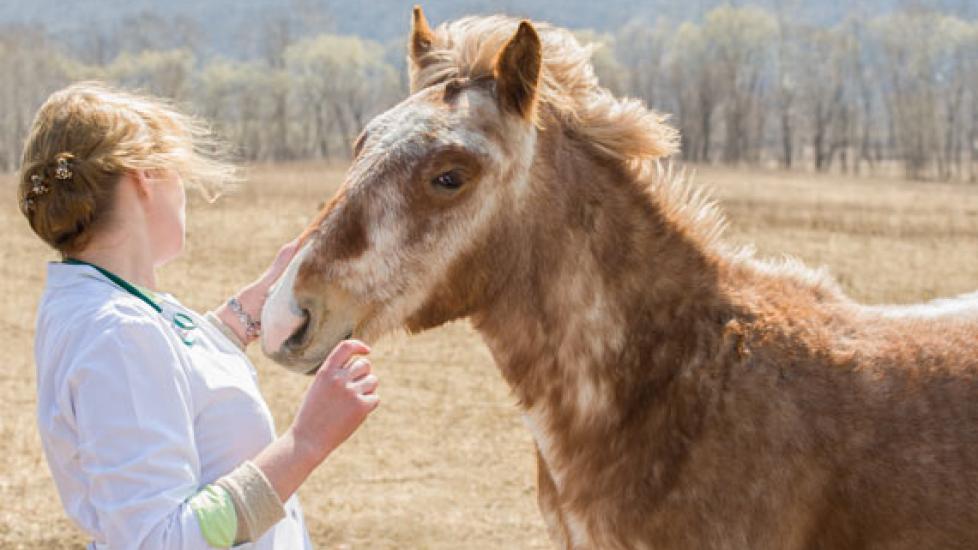Girl Power – Women Veterinarians Can Be Strong Too
Clients who don’t know me very well frequently ask me how I manage my job as, you know, a woman — and a small woman at that. These questions usually present themselves after I’ve pulled a one hundred pound calf from a thousand pound cow or removed a shoe from a Clydesdale or vaccinated an irritated and morbidly obese llama.
If you look carefully, there are actually two parts to this gender question. One is: Isn’t this (this being the role of a large animal veterinarian) usually a man’s job? The second is: You’re not very strong, are you?
Although these questions sound sexist, I honestly don’t think they are meant in that manner in the majority of cases. It’s just a curiosity and is usually asked by women themselves. Here are my answers.
Over the past few decades, admissions to veterinary schools have slowly and steadily become predominately female. Just walk into any small animal clinic and chances are most of the vets are female. In my graduating class of 2008, out of some 70 odd graduates, about ten were male.
If you walk down the main hall of my alma mater, Purdue University, there are annual class composites dating from the first graduating class of 1954; this class was all men. Succeeding classes included the occasional classic ‘60s career woman with bee hive hair and horn rimmed glasses, but it isn’t until the mid ‘70s that slowly the male to female ratio goes from 20:1 to 10:1 to 1:1, and then around 1986 0.5: 1 to 0.25:1 to now 0.1:1. That’s one woman to every tenth of a man. Or one man to every ten women. I just like to say it the other way better.
It seems as though the growth of women veterinarians has occurred along with the growth of small animal veterinary medicine, which makes sense: minimal heavy lifting (with the exception of 130 pound Great Danes) and more manageable work schedules allowing for family time and maternity leave are all very attractive components for today’s working woman who wants a career and family, too. But where does this leave large animal veterinarians? This sector, too, sees the increasing prevalence of the female DVM.
I credit my first boss for breaking down local gender barriers for me. As a female large animal vet starting her own practice a decade ago, my boss had grown a client base that not only respected her, but also idolized her.
In terms of size disparity, it’s true that I’m not very strong. I know that. I’m only five feet four inches tall, so I’m regarded as short (despite the national average height of women in the U.S. actually being 5 foot 4 inches) and am deficient in upper body strength. But I have ways around this.
Pharmaceutically, we vets have some pretty potent sedatives, anesthetics, and tranquilizers up our sleeves when it comes to taking an unruly stallion or anxious cow down a peg or two. Also, I’m not afraid to ask for help. When it comes to helping deliver a large calf into this world, I frequently yell, “OK, where are my big strong men?” and have them do the brunt of the pulling while I continue to position body parts and ensure a relatively smooth delivery. Wait; is it sexist for me to ask that?
I’ll be the first one to admit that I can’t do it alone. Also, there’s nothing to prove by trying to do it alone. It’s obvious that I’m short and wimpy looking. So what? I love my job, and with some extra help sometimes I get things done more efficiently (and with less strain on my back). Plus it’s always a good bonding period with clients when you’re up close and personal, breathing heavily around a cow’s back end, covered with lube and birthing fluids.
Even the most stoic and hardened old timer farmers have trouble keeping straight faces after we’ve all busted our butts pulling a huge calf and I’m dancing around in circles in celebration, giving high-fives, and hugging everyone. Trust me; it’s happened more than once.

Dr. Anna O’Brien
Image: Nickolai Repnitskii / Shutterstock
